2024 GMC Hummer EV SUV Review and Test Drive
GMC's mega-SUV shows that electric vehicles don't have to be sensible or sane.
 Tim Stevens
Tim Stevens
Electric vehicles are evolving every day. While early battery-powered cars were anemic, economy-minded rides with about 100 miles of range, you can now buy an EV in almost every price class, vehicle segment, and lifestyle niche, including off-roaders. And in that part of the market, not one is going electric more dramatically than the GMC Hummer.
Available as a pickup truck or SUV, the new-age Hummer flaunts all the toughness and presence of its predecessors in a new, emissions-free package that has nothing to do with environmentalism, but is it worth its considerable price?
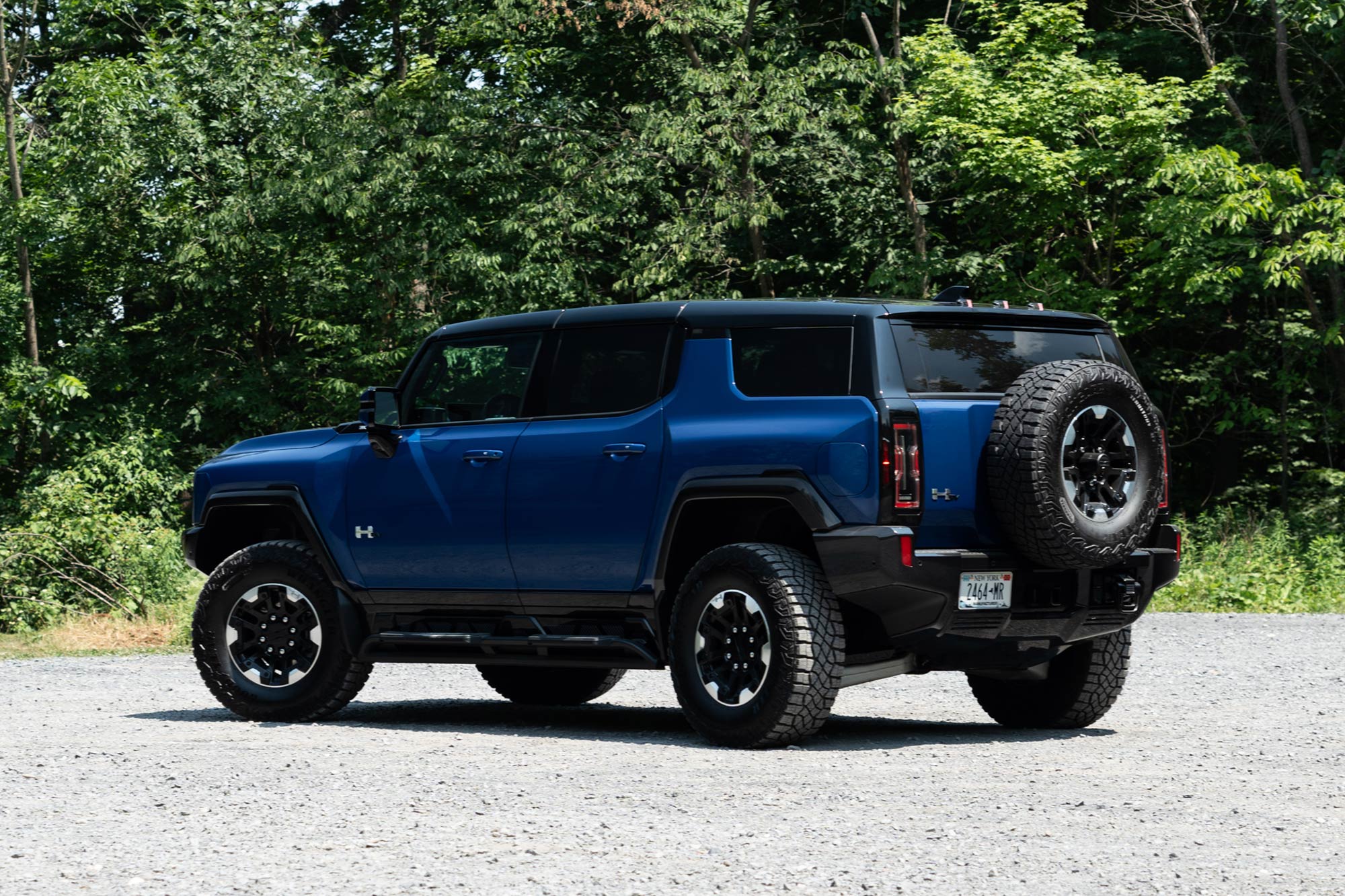 Tim Stevens
Tim Stevens
Hummer SUV Starts at Just Under $100,000
The 2024 GMC Hummer EV is available in pickup and SUV body styles and dual-motor 2X, three-motor 3X, and top-shelf 3X Omega Limited Edition trim levels. The base prices range from the high $90,000s to the low $150,000s, including the destination charge to ship the vehicle from the Detroit, Michigan, factory that builds it to your local dealership. Unfortunately, due to its high price, the Hummer EV is not eligible for any federal tax rebates.
For this GMC Hummer EV SUV review, I test-drove the 3X trim in upstate New York. Highlights from the optional equipment list included the Extreme Off-Road package and Supernova Metallic (blue) paint. The manufacturer's suggested retail price of the test vehicle came to $117,605, including the $2,295 destination charge.
GMC provided the vehicle for this Hummer EV SUV review.
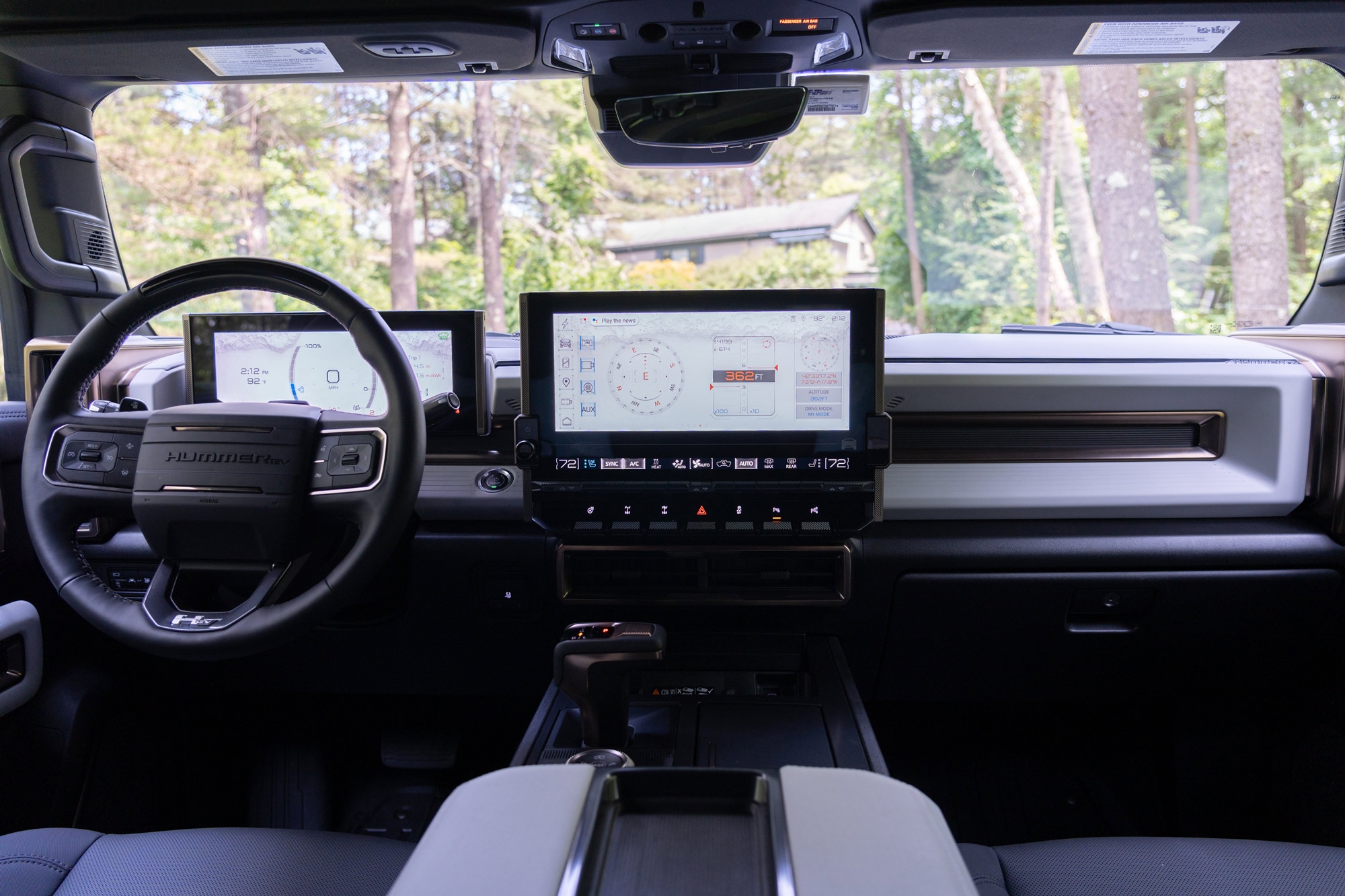 Tim Stevens
Tim Stevens
Unmissable Presence From the Massive Hummer EV SUV
There's no hiding the fact that the Hummer EV SUV is a massive machine, and fans of the brand wouldn't have it any other way. Still, GMC has taken that standard to new heights with this electric version, which weighs more than 9,000 pounds and measures more than a foot longer than the old Hummer H2.
However, the new Hummer SUV is more than just a sizable ride. It is genuinely good looking. I appreciated the nuances of its styling far more than I expected, particularly the front-end detailing. Within the ornate headlights, a series of LEDs glow blue and flow inwards when charging, making it easy to judge progress from afar.
Climb up into the SUV, a process made easier by the running boards and chunky grab handles, and you're greeted with an elevated view of the world around you. The nose may be tall but is relatively short, meaning there's far better outward visibility than you might get with your average full-sized SUV.
You look out from the driver's seat over a surprisingly ornate dashboard featuring white textured vinyl sections and numerous brass-colored highlights. It's bold and busy but also fresh and lively. I don't hate it, and it fits in well with the numerous chunky, blocky controls.
Overall, the interior materials are a mixed bag. The textured vinyl and leather on the seats feel harsh but durable. Still, giant swaths of plastic cover parts of the cabin, too many for a vehicle that starts at nearly $100,000.
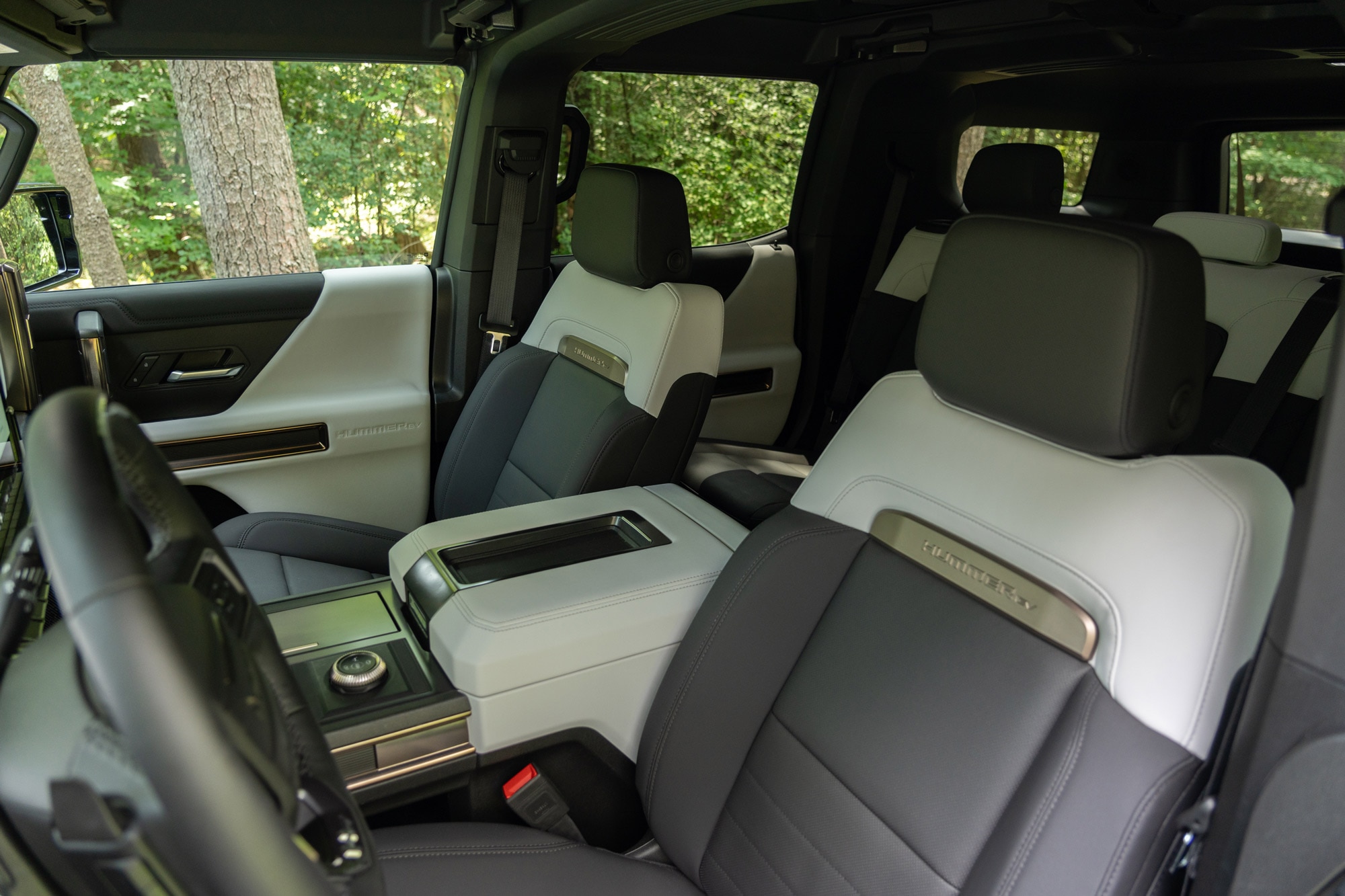 Tim Stevens
Tim Stevens
The Hummer EV SUV Is Not Always Roomy
For all its dimensional presence, the Hummer is most notable for its width. The center console between the heated and ventilated front seats is so vast that you'll feel inclined to speak up when having a casual conversation with your passenger. There's plenty of head, leg, and shoulder room here.
In the second row, seating three passengers is possible, but there's significantly less room. The limited legroom is surprising, and, at 6 feet tall, I found my head pressing firmly into the hard plastic ceiling liner. Given the seat's positioning, removing the SUV's glass T-tops adds ventilation but doesn't help with headroom.
Drivers face a heated steering wheel and operate the climate controls using a row of toggle-like switches below the 13.4-inch touchscreen infotainment system. Rear passengers benefit from a third climate zone and heated outboard seating locations, helping to improve their comfort.
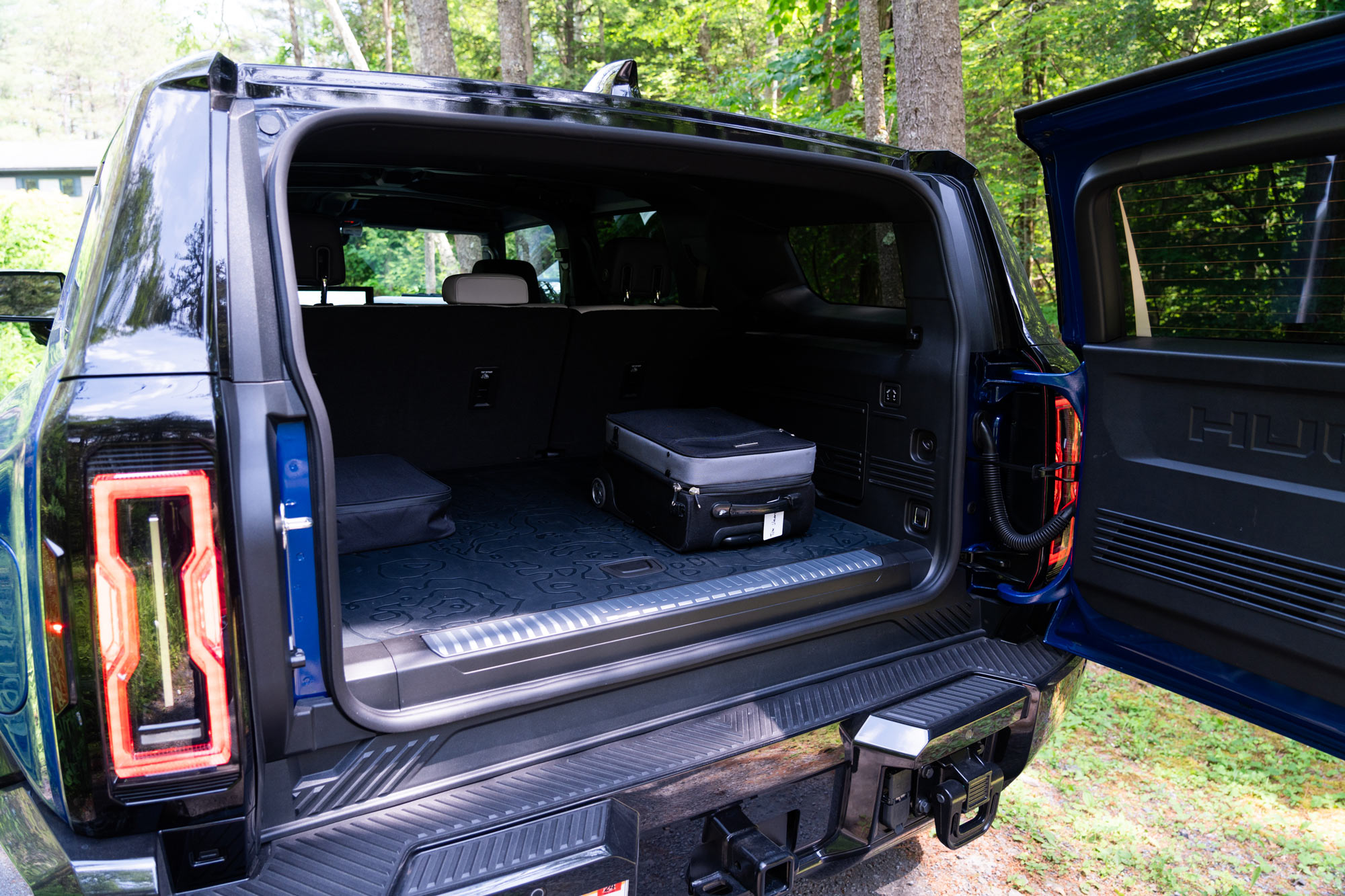 Tim Stevens
Tim Stevens
The Hummer EV Has Little Cargo Space
For all its speed and bulk, hauling cargo was clearly not a Hummer SUV design priority. GMC says there is 35.9 cubic-feet of cargo space behind the rear seats and 81.8 cu-ft with those seats folded down. The seats fold at the touch of a button mounted to the right of the SUV's rear cargo door.
The door is a problem. It swings outward, which means even loading something easy, such as groceries, requires a lot of room behind the Hummer. Once you're in there, though, the cargo area is wide and flat, with tie-down hooks in each corner and a slender cubby space beneath the load floor ideal for storing charging cables, first-aid kits, and the like.
GMC augments the Hummer SUV's traditional cargo hold with a sizeable front trunk (frunk) under the hood, which most people will find more convenient for storing smaller items, such as the goodies accumulated during that grocery run.
Inside the cabin, the Hummer offers several storage pockets and places to hide things, including a cavernous compartment beneath the armrest big enough for a Thanksgiving turkey with all the trimmings.
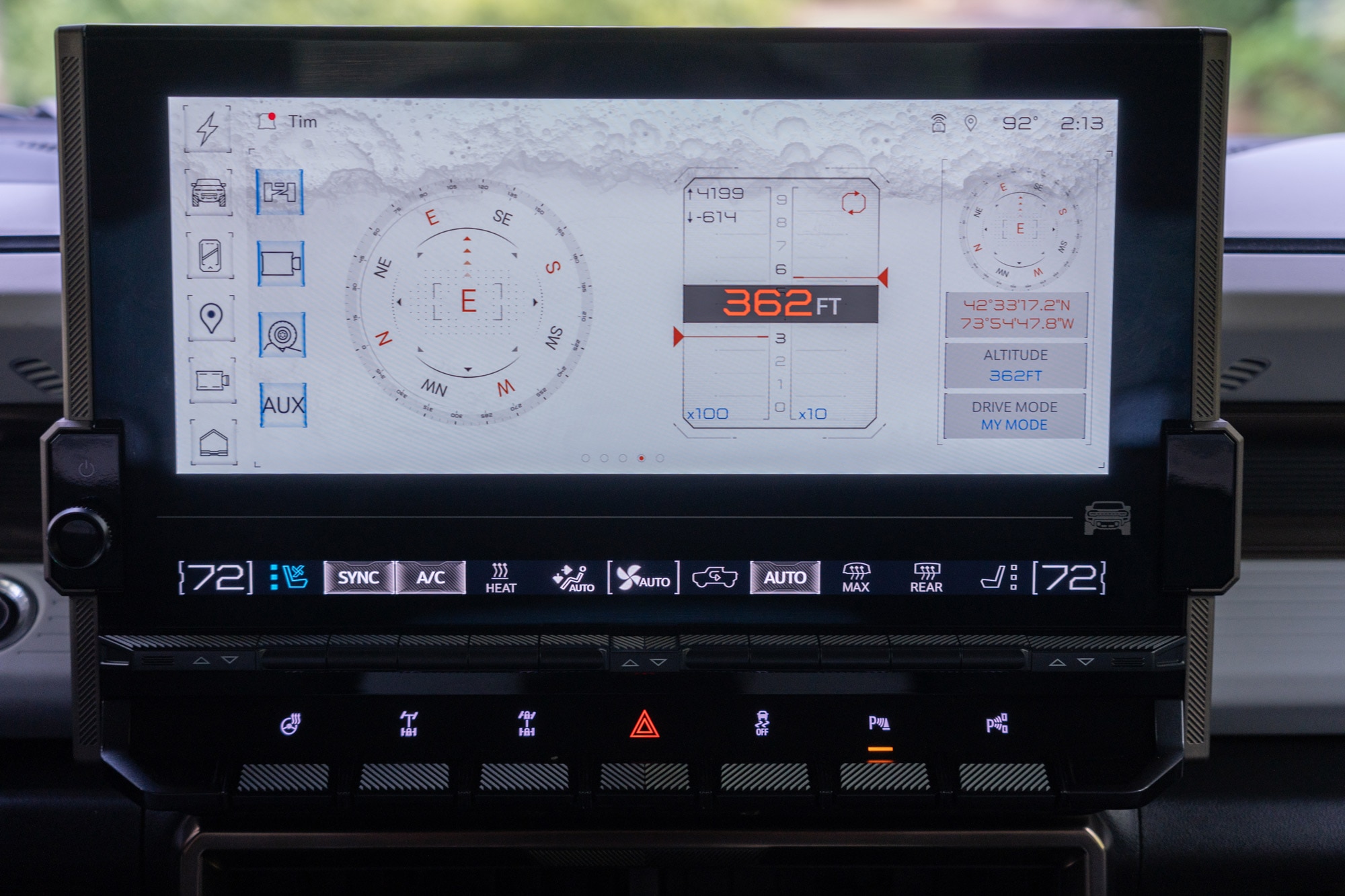 Tim Stevens
Tim Stevens
GMC Android Automotive Infotainment System
Inside its Android Automotive-powered infotainment system, the Hummer EV receives numerous custom screens covering all the fun stuff you'd want inside a giant, off-road-themed rig like this. The highlights include endless displays for tracking suspension articulation, inclinometer information, and controls for the onboard tire-pressure management system, which can air up or down the tires on command.
Everything is bright, easy to use, and most important, snappy in responding to inputs and commands. Sign in to the integrated Alexa voice assistant, and you can easily do everything from getting directions to the closest Starbucks to obtaining more nuanced information such as when a nearby restaurant closes.
The infotainment system offers the usual selection of radio-based audio sources, Bluetooth, wireless Android Auto and Apple CarPlay connectivity, and dozens of apps installable through Android Automotive. No matter your choice, the entertainment plays through a 14-speaker Bose system that's powerful enough for the Hummer SUV's big cabin but didn't exactly wow me with its sound quality.
 Tim Stevens
Tim Stevens
Many Displays Abound, Several for Visibility
In addition to the main infotainment screen, the Hummer EV features a 12.3-inch configurable digital instrument display offering a seemingly infinite number of data permutations. The left and right sections can show anything from roll and pitch to driving-range information, while current speed and battery state of charge dominates the center section.
The rearview mirror is also a digital display. It shows a live camera view of what's behind the SUV and is particularly helpful because GMC mounts the spare tire on the rear cargo door, blocking much of the back window. A perplexing lack of a rear wiper likewise challenges rearward visibility.
That digital rearview mirror uses one of several cameras around the Hummer EV that enable a 360-degree surround view of the SUV. This feature is instrumental for parking such a large vehicle. The cameras also enhance the off-roading experience, and there's even a view to help you line up your tow hitch with your trailer.
Speaking of trailering, the infotainment system lets you create multiple trailer profiles to help simplify the task. GMC rates the electric SUV to tow a maximum of 7,500 pounds.
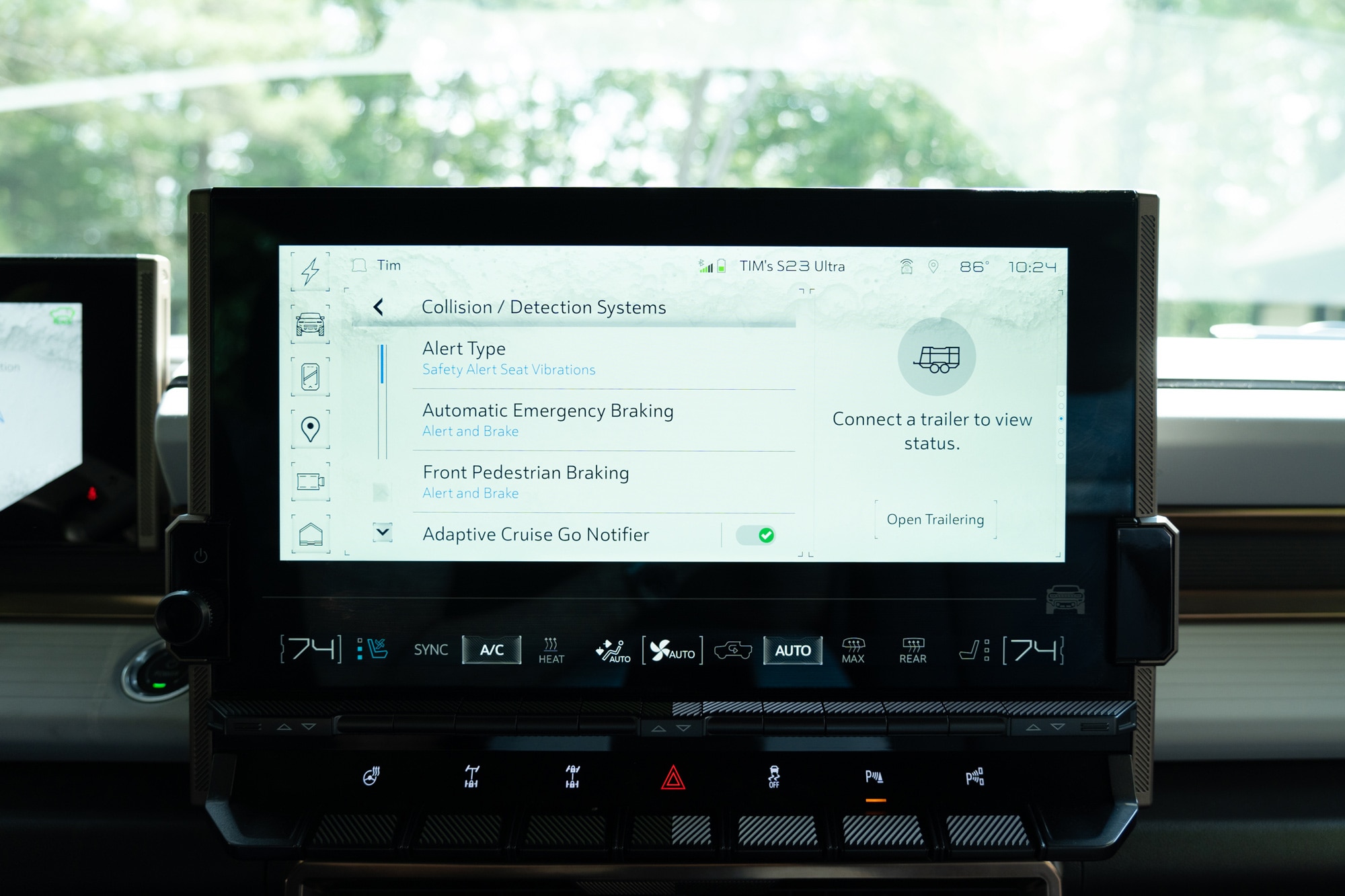 Tim Stevens
Tim Stevens
2024 GMC Hummer EV SUV Super Cruise Is Hands Off
The Hummer EV SUV offers a comprehensive collection of standard advanced driver-assistance systems, including forward-collision warning, automatic emergency braking, lane-departure warning, lane-keeping assist, active blind-spot monitoring, and an automatic emergency stop-assist system. These features worked well in and around town, buzzing the driver's seat whenever I strayed too far from the intended lane, which is easy to do in an SUV this size.
My test vehicle also had Super Cruise, which pairs adaptive cruise control with lane-centering assist to provide hands-free driving on approved limited-access highways. During testing, Super Cruise was dependable and smooth. It even cleanly changed lanes to pass slower traffic on its own accord. It is impressive technology.
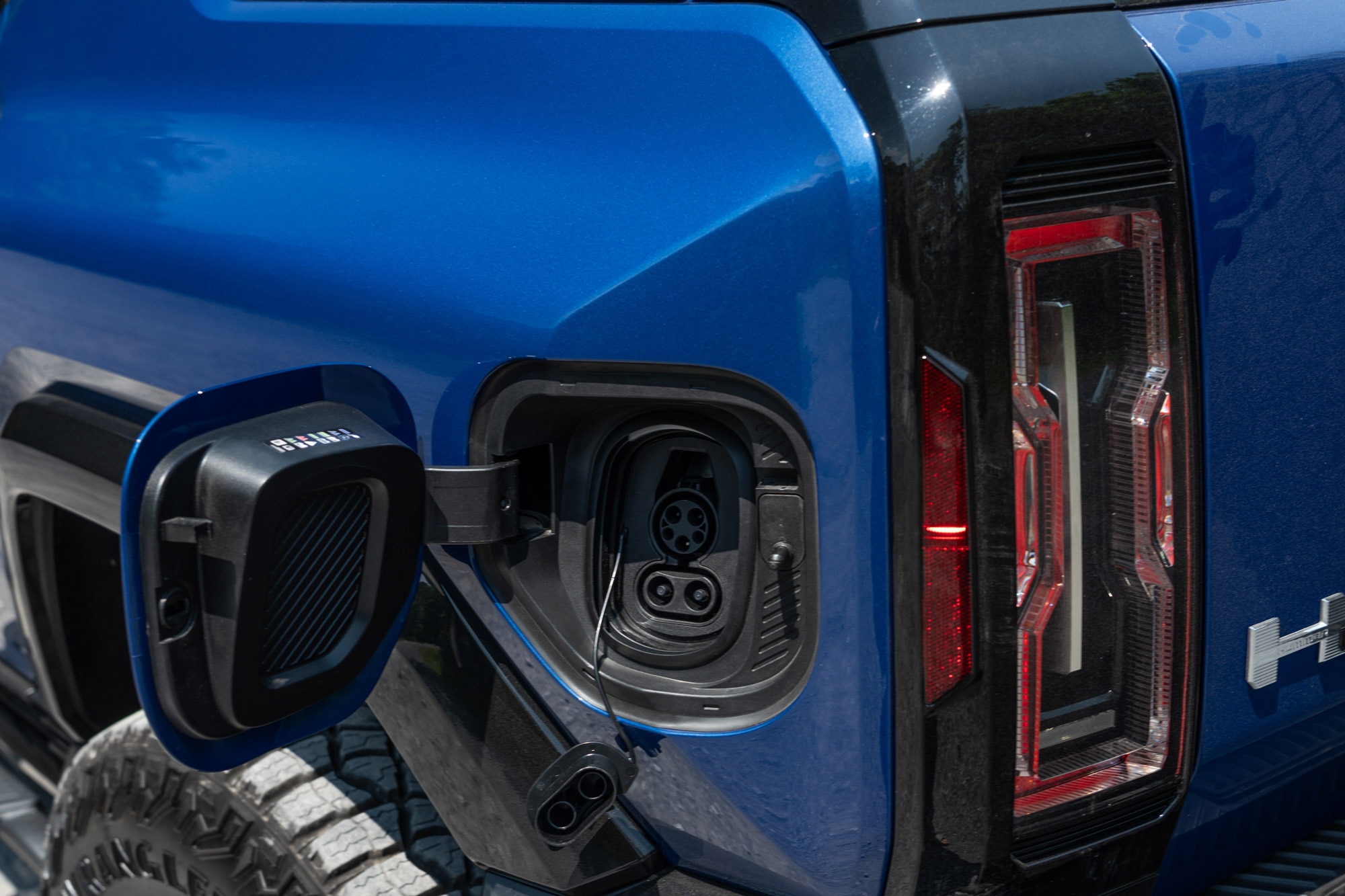 Tim Stevens
Tim Stevens
Astonishing Power From the Three-Motor Hummer EV
In 3X trim, the Hummer EV SUV offers three electric motors. GMC locates two at the rear to provide independent power delivery to and control of each back wheel. Up front, a third motor drives the front wheels. The combined output is a whopping 830 horsepower and 11,500 pound-feet of torque.
The three motors draw electricity from a 170-kilowatt-hour (kWh) battery pack. The EPA says the Hummer EV SUV 3X consumes 63 kWh per 100 miles of driving and offers about 314 miles of range. However, with the all-terrain tires fitted on the test vehicle, that dropped to 298 miles of range, or 67 kWh per 100 miles.
In my testing, I did slightly better than the EPA rating, averaging 1.6 miles per kWh (62.5 kWh per 100 miles) for a maximum theoretical range of 316 miles. GMC says it takes 10.5 hours to recharge the Hummer using a 240-volt charger.
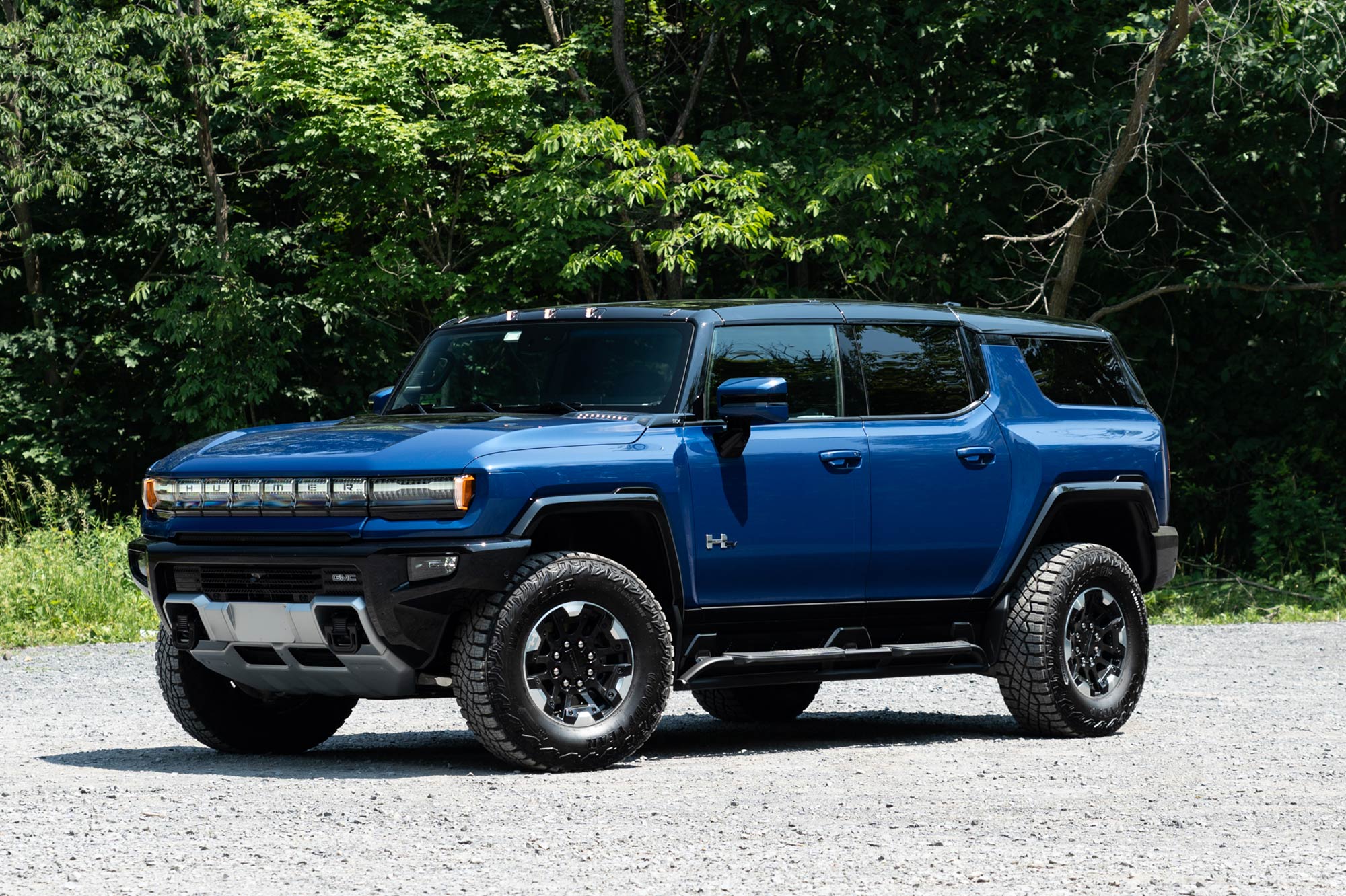 Tim Stevens
Tim Stevens
Decent Acceleration but Lazy Performance in the Hummer EV
You wouldn't expect a vehicle this large to accelerate well, but the Hummer EV can launch off the line with breathtaking ease. The Watts to Freedom mode requires a few button taps and a lengthy preparation period where the SUV squats into position, but it can propel this 9,000-pound rig to 60 mph in a claimed 3.5 seconds. That's borderline painful.
When driving around in Normal mode, a quick stab of the accelerator pedal is enough to point the nose skyward as the SUV surges forward. However, doing so causes the steering to become disconcertingly vague, which is unpleasant.
Overall, handling is relaxed in the Hummer, with slow steering and plenty of compliance from the air suspension. The suspension can dynamically raise or lower the vehicle depending on the driving mode and even drop it down to make climbing in and out easier.
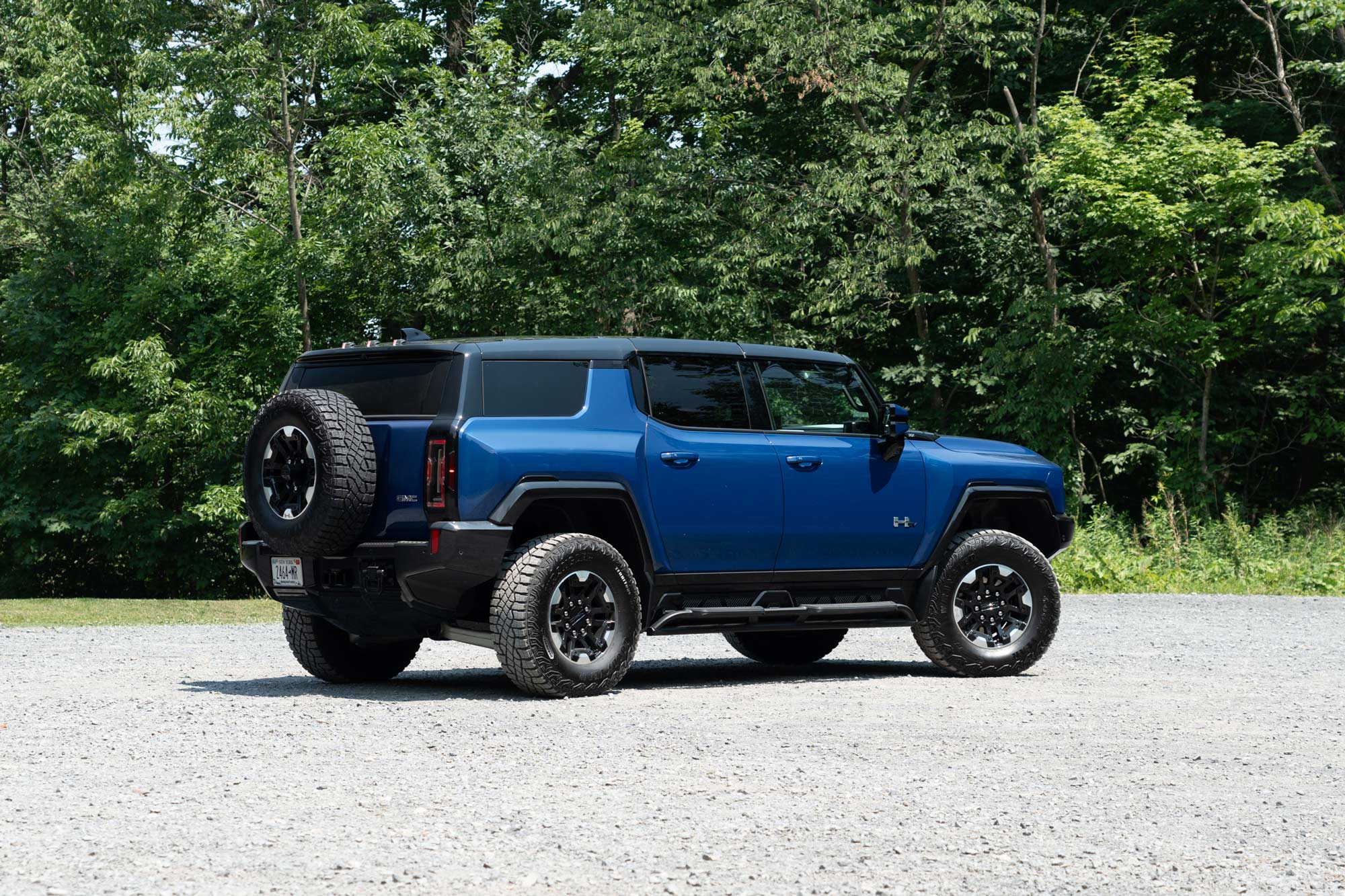 Tim Stevens
Tim Stevens
For many, the raised position is more important. The Hummer EV's off-road capabilities are impressive, with a locking differential up front and a virtual locking differential out back provided by the pair of electric motors. That's combined with a couple of driving modes calibrated for the dirt: off-road, for general back-country driving, and terrain, for slower-speed crawling.
Unfortunately, I did not have the opportunity to thoroughly test these capabilities. Still, I was able to tackle some decidedly rough, rutted, and muddy county roads, which the Hummer traversed with ease. However, its prodigious dimensions made the narrower bits a real challenge.
On the road, the Extreme Off-Road package's 305/70R-18 Goodyear Wrangler Territory mud-terrain tires produce a lot of road noise. Otherwise, the Hummer is reasonably quiet, with less wind noise than expected from such a blocky machine. It drives pleasantly and comfortably enough, while Super Cruise just increases its long-distance appeal.
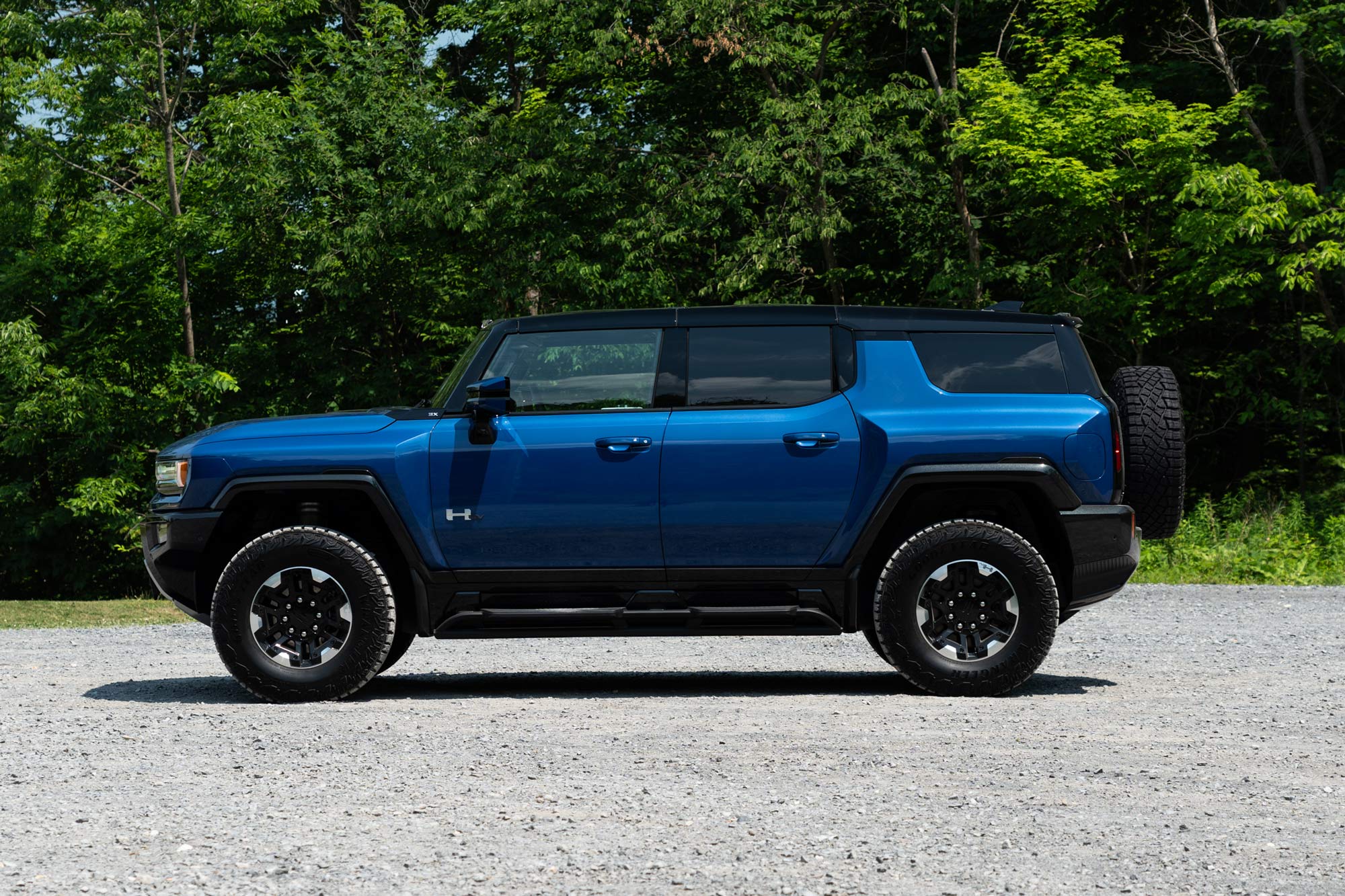 Tim Stevens
Tim Stevens
The Hummer EV Is a Challenging Prospect for Most
The 2024 GMC Hummer EV SUV is a curious machine. Its straight-line performance is astonishing, defying the laws of physics.
As impressive as that is, it still raises the question of why. The big, broad Hummer is far more likely to become deterred than successful on a tight and technical trail, as far as off-roading goes.
The Hummer EV is more of a conversation piece than anything else. If you're looking for attention, it's hard to imagine many vehicles turning more heads than this one, aside from maybe a Tesla Cybertruck.
Written by humans.
Edited by humans.
 Tim Stevens
Tim StevensTim is a freelance automotive and technology journalist with more than 25 years of experience. He is a frequent contributor to major domestic and international online, print, and broadcast news outlets, sharing his insights and perspectives on everything from cybersecurity to supercars. Tim also serves as a juror for the World Car Awards and regularly acts as speaker and moderator at major industry events such as CES, Web Summit, SXSW, NAIAS, and AutoMobility LA. He formerly served as editor-at-large and vice president of content at CNET. Before that he was editor-in-chief of Engadget and editorial director at AOL Tech.
Related articles
View more related articles